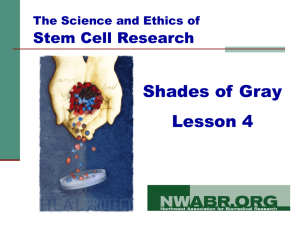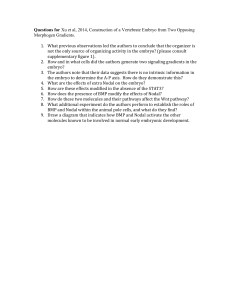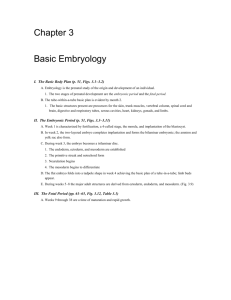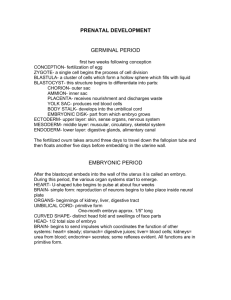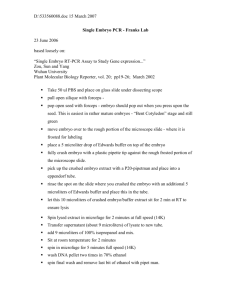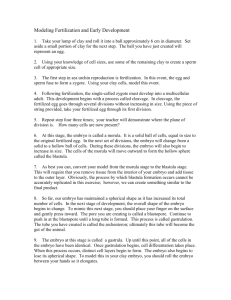The brain of the pregnant woman releases a
advertisement
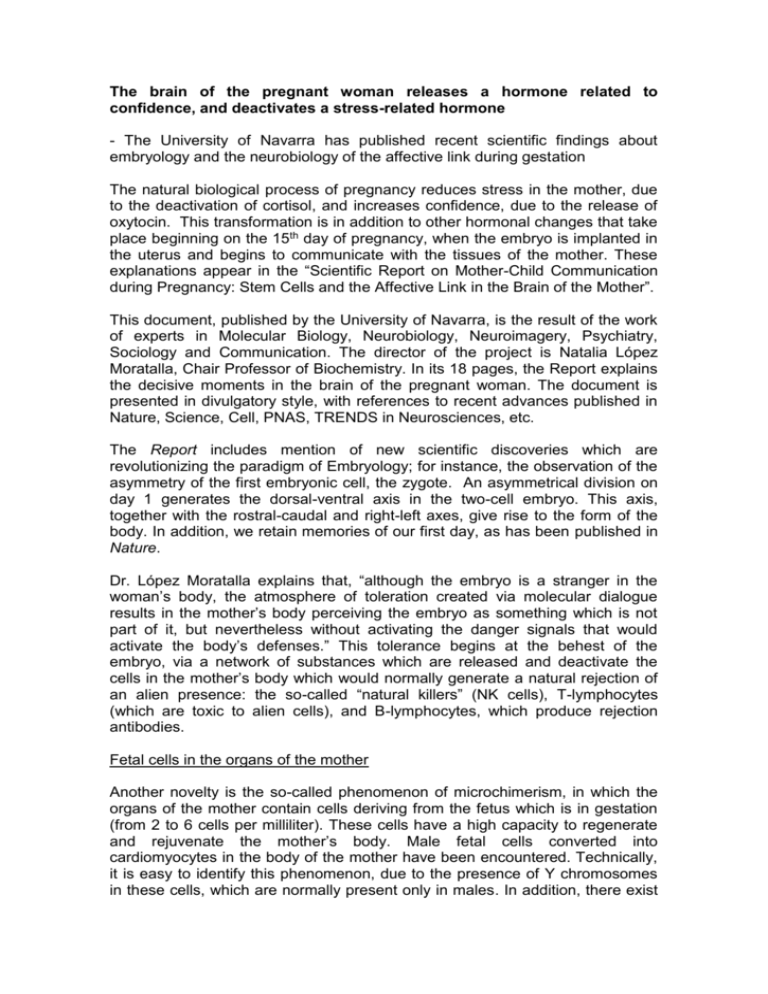
The brain of the pregnant woman releases a hormone related to confidence, and deactivates a stress-related hormone - The University of Navarra has published recent scientific findings about embryology and the neurobiology of the affective link during gestation The natural biological process of pregnancy reduces stress in the mother, due to the deactivation of cortisol, and increases confidence, due to the release of oxytocin. This transformation is in addition to other hormonal changes that take place beginning on the 15th day of pregnancy, when the embryo is implanted in the uterus and begins to communicate with the tissues of the mother. These explanations appear in the “Scientific Report on Mother-Child Communication during Pregnancy: Stem Cells and the Affective Link in the Brain of the Mother”. This document, published by the University of Navarra, is the result of the work of experts in Molecular Biology, Neurobiology, Neuroimagery, Psychiatry, Sociology and Communication. The director of the project is Natalia López Moratalla, Chair Professor of Biochemistry. In its 18 pages, the Report explains the decisive moments in the brain of the pregnant woman. The document is presented in divulgatory style, with references to recent advances published in Nature, Science, Cell, PNAS, TRENDS in Neurosciences, etc. The Report includes mention of new scientific discoveries which are revolutionizing the paradigm of Embryology; for instance, the observation of the asymmetry of the first embryonic cell, the zygote. An asymmetrical division on day 1 generates the dorsal-ventral axis in the two-cell embryo. This axis, together with the rostral-caudal and right-left axes, give rise to the form of the body. In addition, we retain memories of our first day, as has been published in Nature. Dr. López Moratalla explains that, “although the embryo is a stranger in the woman’s body, the atmosphere of toleration created via molecular dialogue results in the mother’s body perceiving the embryo as something which is not part of it, but nevertheless without activating the danger signals that would activate the body’s defenses.” This tolerance begins at the behest of the embryo, via a network of substances which are released and deactivate the cells in the mother’s body which would normally generate a natural rejection of an alien presence: the so-called “natural killers” (NK cells), T-lymphocytes (which are toxic to alien cells), and B-lymphocytes, which produce rejection antibodies. Fetal cells in the organs of the mother Another novelty is the so-called phenomenon of microchimerism, in which the organs of the mother contain cells deriving from the fetus which is in gestation (from 2 to 6 cells per milliliter). These cells have a high capacity to regenerate and rejuvenate the mother’s body. Male fetal cells converted into cardiomyocytes in the body of the mother have been encountered. Technically, it is easy to identify this phenomenon, due to the presence of Y chromosomes in these cells, which are normally present only in males. In addition, there exist data on the participation of these cells, for example, in the repair of the hearts of mothers with cardiopathies. The Report of the University of Navarra summarizes various relevant scientific advances, which are unknown to many non-specialized researchers, and also to the population at large. It explains in chronological form the evolution of the stem cells: three-cell embryo (day 2), the embryo with pluripotent stem cells from which are derived the more than 200 types of cells of the mature human body (day 5), the beginning of the formation of the nervous system and the outlines of the blood system (day 16), the beginning of blood flow within the embryo (day 20), the first heartbeat (day 21), etc.

